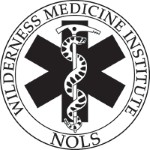Student Ambulance Service Proves Its Worth During Floods
By JASON BUSCH
EMS World
Harpur’s Ferry provided aid to nearly 2,000 evacuees
When things go wrong, they usually all go wrong at the same time, as in "when it rains, it pours."
But when it pours, it floods. And the way in which people respond to a natural disaster like a flood go a long way toward righting those wrongs.
On Sept. 7, 2011, rain fell in Binghamton, NY, not atypical for that time of year in southern New York. But the weather progressively worsened as Tropical Storm Lee moved through, swelling the Susquehanna River. Flood walls were built to withstand a flood stage of 25 feet. The river was expected to rise two feet above that.
Called in to assist with evacuees being sheltered at Binghamton University’s Events Center that day was Harpur’s Ferry (HF) Ambulance. That wouldn’t be unusual, except HF isn’t your typical EMS agency.
Harpur’s Ferry is a student-run ALS ambulance agency based out of Binghamton University. "We currently have 100 student members, 10 of which [comprise] our agency’s staff leadership," says Jennifer Larson, HF’s public relations coordinator. "Harpur’s Ferry has two ALS ambulances, two ALS fly cars, a John Deere Gator and a command trailer. All members are required to obtain their New York State EMT-Basic certification and each have the option to take the Advanced EMT-Critical Care Class sponsored by the agency. We also offer EVOC to our members that are drivers, or training to be a driver."
Sound like a little much for a student volunteer ambulance service? Not when its annual call volume is typically between 800 and 900 calls. And that level of service came in handy during the 11 days HF provided emergency care for nearly 2,000 evacuees.
"At 4:30 p.m., Campus Emergency Manager Dave Hubeny sent a text message alert asking the incident management team personnel to report to the Events Center to staff the command post," says Larson. Shortly after, the campus was notified that the Events Center was open as an evacuee shelter. HF immediately mobilized available personnel. Chief Robbie Cohen and Operations Director Pavel Antonov reported to the Command Post for a briefing and to review the incident action plan. From there a treatment room was set up to provide care to patients and all HF operations were moved to the Events Center.
"Harpur’s Ferry treated 257 patients throughout our (24-hour-a-day, 11 day) flood response," says Larson. "The Events Center Shelter held both members of the general population and contained an area specific for special needs evacuees. The special events area was staffed by numerous doctors and nurses, and contained a pharmacy for evacuee use."
During the ordeal HF also provided mutual aid to Senior Care EMS, Rural Metro EMS and Guilfoyle Ambulance. "To the best of our knowledge we also set up the first intercollegiate EMS mutual aid with SUNY Oneonta and SUNY Cortland EMS," adds Larson. "In addition, we worked with the Broome County Department of Health, the American Red Cross, United Health Services and Binghamton University in coordinating our shelter operations."
That HF has such a well-trained student volunteer staff was a clear benefit to all those it helped during the late summer flood. But the event also provided a valuable learning experience for HF volunteers.
"As a collegiate agency, our typical calls are conducive with the college age population," says Larson. "A majority of our calls are for sports injuries or intoxication. We do see a variety of other calls, though, as we participate in Broome County’s mutual aid system. We encountered quite a different population during the flood, though. Since the shelter consisted of a generally older population, we saw many patients with chronic illness like diabetes, and encountered atypical emergencies (for a collegiate agency) such as strokes."
For more information about Harpur’s Ferry Ambulance, visit www.harpursferry.org.

